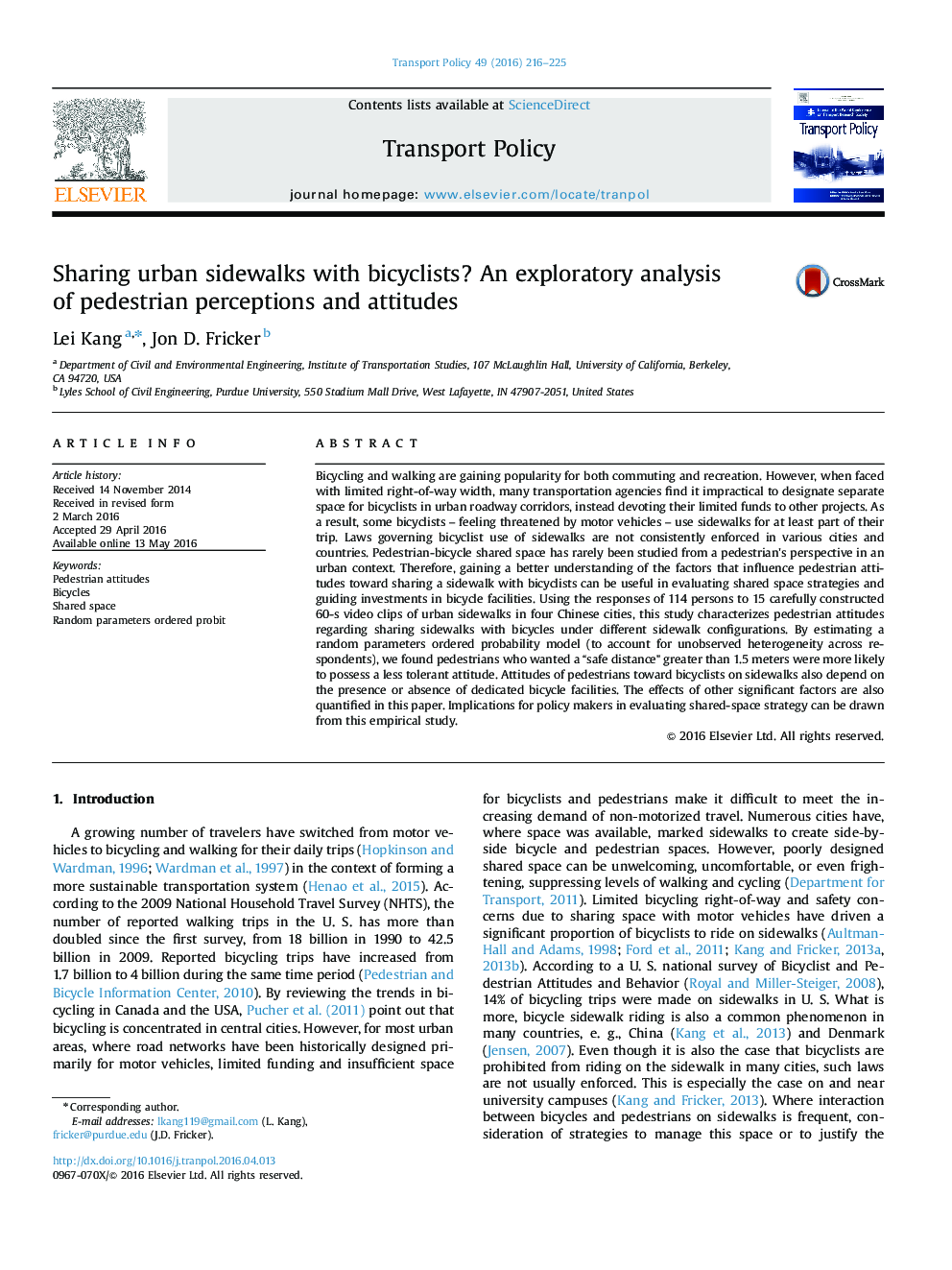| Article ID | Journal | Published Year | Pages | File Type |
|---|---|---|---|---|
| 1064788 | Transport Policy | 2016 | 10 Pages |
•A random parameters ordered probit model is developed using a video-clip-based survey.•Pedestrians' attitudes toward bicyclists are found to vary across different scenarios.•A behavioral empirical framework is proposed to understand shared sidewalk space.•The results could provide guidance for pedestrian-bicycle sharing space strategy.
Bicycling and walking are gaining popularity for both commuting and recreation. However, when faced with limited right-of-way width, many transportation agencies find it impractical to designate separate space for bicyclists in urban roadway corridors, instead devoting their limited funds to other projects. As a result, some bicyclists – feeling threatened by motor vehicles – use sidewalks for at least part of their trip. Laws governing bicyclist use of sidewalks are not consistently enforced in various cities and countries. Pedestrian-bicycle shared space has rarely been studied from a pedestrian's perspective in an urban context. Therefore, gaining a better understanding of the factors that influence pedestrian attitudes toward sharing a sidewalk with bicyclists can be useful in evaluating shared space strategies and guiding investments in bicycle facilities. Using the responses of 114 persons to 15 carefully constructed 60-s video clips of urban sidewalks in four Chinese cities, this study characterizes pedestrian attitudes regarding sharing sidewalks with bicycles under different sidewalk configurations. By estimating a random parameters ordered probability model (to account for unobserved heterogeneity across respondents), we found pedestrians who wanted a “safe distance” greater than 1.5 meters were more likely to possess a less tolerant attitude. Attitudes of pedestrians toward bicyclists on sidewalks also depend on the presence or absence of dedicated bicycle facilities. The effects of other significant factors are also quantified in this paper. Implications for policy makers in evaluating shared-space strategy can be drawn from this empirical study.
